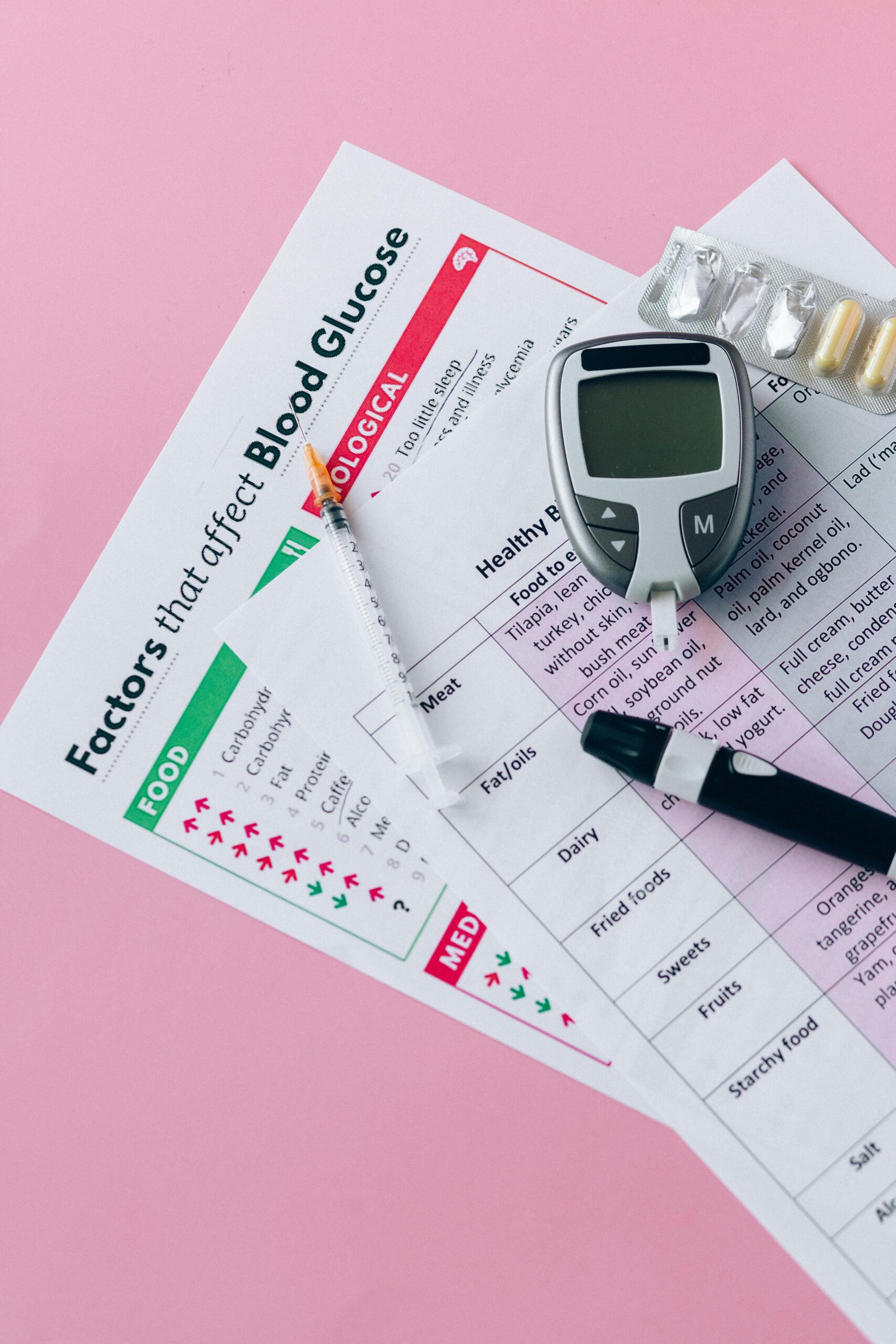Belly fat is one of the most common concerns people have when it comes to achieving overall health and aesthetics. While it’s natural to store some fat around the abdomen, excess belly fat can pose serious health risks, including cardiovascular issues and metabolic disturbances. Here at Empowerise, our goal is to provide you with science-backed strategies that address the root causes behind stubborn belly fat so you can make empowered decisions about your health.
In this article, we will:
- Explore the top 5 mistakes preventing you from losing belly fat.
- Discuss how bloating can create the illusion of belly fat.
- Examine the role genetics play in belly fat storage and how our genetic tests can give you a personalized roadmap for fat loss.
- Provide you with valuable tips and action steps to take control of your journey towards a healthier, leaner abdomen.
By understanding the underlying factors and how they influence your body, you can optimize your lifestyle for more effective fat loss. Keep reading to learn about common pitfalls and how to overcome them with expert guidance!
Mistake #1: You’re Not in a Calorie Deficit
Understanding the Calorie Deficit
A calorie deficit occurs when you consume fewer calories than your body expends. This shortfall in energy prompts your body to utilize stored fat, including belly fat, for fuel. Many people underestimate their calorie intake or overestimate their energy expenditure, resulting in zero or minimal deficits.
How to Achieve a Calorie Deficit
- Track Your Intake: Consider using a nutrition tracking app to log your meals. This helps you understand how many calories you’re consuming daily and where you can make adjustments.
- Balanced Diet Composition: Focus on lean proteins (chicken, fish, tofu), complex carbohydrates (whole grains, legumes), healthy fats (avocados, nuts), and plenty of fruits and vegetables.
- Portion Control: Even healthy foods can lead to weight gain if consumed in large quantities. Be mindful of serving sizes.
- Combine With Exercise: Resistance training helps preserve muscle mass while you lose fat, and cardio increases overall calorie burn.
The Science Behind It
To understand why a calorie deficit is essential for losing belly fat, it helps to look at how the body uses energy. Your body requires a certain number of calories each day to maintain its basic functions—known as your Total Daily Energy Expenditure (TDEE). This TDEE is the sum of:
- Basal Metabolic Rate (BMR): The energy your body uses at rest for vital functions like breathing and cell production.
- Thermic Effect of Food (TEF): The energy it takes to digest and absorb nutrients.
- Non-Exercise Activity Thermogenesis (NEAT): The calories burned by everyday activities such as walking, fidgeting, or cleaning.
- Exercise Activity (EAT): The additional calories you burn from structured workouts or sports.
When you consume fewer calories than your TDEE—your calorie deficit—your body has to make up the energy shortfall by tapping into its stored reserves. Fat cells (adipocytes) hold onto excess energy in the form of triglycerides. In a deficit, your body breaks down these triglycerides into fatty acids and glycerol, which then enter your bloodstream and can be used as fuel by your muscles and other tissues. You can read more about it here.
Why It Varies from Person to Person
The exact deficit you need can vary widely due to:
- Genetics: Some individuals naturally have slightly faster or slower metabolisms, and certain genes affect how effectively you mobilize and utilize stored fat.
- Age & Sex: Younger individuals and men often have higher BMRs due to greater muscle mass, while hormonal factors can also influence fat storage and metabolism.
- Activity Level & Muscle Mass: Muscle burns more calories at rest than fat does. If you have more muscle mass and stay active, you’ll have a higher TDEE and thus might require a different calorie deficit level compared to someone more sedentary.
- Dietary Composition: Protein, for example, has a higher thermic effect (TEF) compared to fats or carbohydrates, meaning your body expends more energy digesting and assimilating protein.
The Importance of Consistency
Maintaining a calorie deficit consistently over time is crucial because frequent “cheat” meals or untracked snacks can quickly nullify your deficit. If you regularly exceed your calorie target—even briefly—you may never dip into your stored belly fat as a fuel source. Over time, this inconsistency impedes progress.
Additionally, your body is adaptive. If you’ve been in a deficit for a long period, metabolic adaptation can occur, where your metabolism slows slightly to conserve energy. This is why adjusting your diet and exercise plan periodically is often necessary to continue seeing results.
When managed properly, a steady, moderate calorie deficit helps your body preferentially burn stored fat while preserving as much muscle tissue as possible—key to achieving a healthier and leaner midsection.
Mistake #2: Alcohol Consumption
Alcohol and Fat Storage
Alcohol provides empty calories—calories that offer little to no nutritional value. Your body prioritizes metabolizing alcohol before other nutrients. As a result, consuming alcoholic beverages often leads to leftover calories getting stored as fat, frequently around the abdomen.
Hidden Calories in Alcohol
- Beer: Often contains between 150-200 calories per serving.
- Wine: Contains roughly 125 calories for a standard 5 oz pour.
- Mixed Drinks: Can easily exceed 200 calories per glass due to sugary mixers.
When you indulge frequently, these extra calories add up quickly and hinder your fat loss efforts.
Reducing Alcohol Intake
- Set Limits: Decide on a weekly or monthly alcohol limit.
- Switch to Lower-Calorie Options: If you do drink, consider lower-calorie beverages like a vodka soda or a light beer.
- Mindful Mixing: Replace sugary mixers with calorie-free alternatives like sparkling water, diet soda, or fresh lime juice.
- Hydrate: Drink plenty of water alongside alcoholic beverages to help moderate intake.
The Bigger Picture
Alcohol also disrupts sleep patterns and can lead to poorer food choices. By limiting your intake, you reduce empty calories, sleep better, and support better hormonal function. All of these factors contribute to more effective belly fat loss.
Mistake #3: Smoking
Smoking’s Role in Belly Fat
Smoking has been consistently associated with increased abdominal fat. Nicotine can suppress appetite temporarily, but the overall hormonal imbalance triggered by smoking can shift fat deposition toward the central abdominal region. Over time, this raises the risk of metabolic syndrome and other complications. You can see the study here.
Inflammation and Cortisol
Smoking elevates stress hormone levels (cortisol) and causes systemic inflammation, both of which promote fat storage around the midsection. Chronic inflammation can also make your fat cells resistant to normal metabolic processes, further complicating fat loss efforts.
How to Quit Smoking
- Seek Professional Guidance: Talk to your healthcare provider about cessation programs, nicotine replacement therapies, or prescription medications.
- Behavioral Counseling: Cognitive-behavioral therapy (CBT) and other counseling methods can significantly improve cessation success rates.
- Support Systems: Friends, family, or online support communities can keep you accountable.
- Plan for Challenges: Identify triggers, such as certain social situations or stress, and develop coping strategies.
Health Benefits of Quitting
- Improved lung function and cardiovascular health.
- Reduced inflammation and cortisol levels.
- A metabolism more conducive to fat loss, especially in the belly region.
Mistake #4: Not Sleeping Enough
Why Sleep Matters
Sleep is often overlooked in fitness and fat loss discussions, but it’s a crucial component. Lack of sleep disrupts several physiological processes that regulate hunger, metabolism, and energy levels.
Hormones at Play
- Ghrelin: The “hunger hormone.” Lack of sleep increases ghrelin, leading to enhanced appetite.
- Leptin: The “satiety hormone.” Poor sleep reduces leptin, making it harder to feel full.
- Cortisol: Stress hormone. Increases with sleep deprivation, which can promote belly fat accumulation.
Consequences of Sleep Deprivation
- Increased Cravings: You may find yourself craving sugary or high-calorie foods.
- Lower Energy for Workouts: Less motivation and stamina during exercise.
- Reduced Willpower: Tiredness makes it harder to resist temptations and stick to a healthy regimen.
- Impaired Insulin Sensitivity: This can lead to higher fat storage over time.
Tips for Better Sleep
- Establish a Routine: Go to bed and wake up at the same time every day.
- Limit Screen Time: Blue light from devices can disrupt your circadian rhythm.
- Create a Relaxing Environment: Keep your bedroom cool, dark, and quiet.
- Avoid Heavy Meals and Caffeine Before Bed: Both can interfere with sleep quality.
- Limit Water Intake in The Late Evening: Waking up to urinate is going to ruin your sleep.
By prioritizing quality sleep, you balance your hormones, reduce stress, and optimize your body for more efficient belly fat loss.
Mistake #5: You’re Sedentary
The Impact of Inactivity
In a world where technology makes many tasks automated, it’s easier than ever to fall into a sedentary lifestyle. Unfortunately, when you don’t move enough, your body becomes less efficient at burning calories and more prone to storing fat. Prolonged sitting also weakens core muscles, reducing the body’s capacity to support and shape the midsection.
Incorporating Movement
- Break Up Sitting Periods: Set an alarm every hour to stand, stretch, or walk around.
- Active Hobbies: Choose recreational activities like hiking, swimming, or dancing.
- Daily Step Goal: Aim for at least 8,000-10,000 steps per day.
- Resistance Training: Build muscle to increase resting metabolic rate.
- Functional Exercises: Planks, squats, and deadlifts strengthen core muscles and support fat-burning.
Overcoming Sedentariness
- Desk Adjustments: Use a standing desk or take walk breaks during long periods of work.
- Social Accountability: Join a walking club or find a workout partner to stay motivated.
- Use Technology Wisely: Apps and wearable devices can track your steps, remind you to move, and provide daily movement goals.
By embracing an active lifestyle, you boost your metabolism, support better fat loss, and promote overall health—a powerful combination for reducing belly fat.
How Bloating Can Create the Illusion of Belly Fat
The Difference Between Bloating and Fat
Sometimes what you perceive as belly fat might be abdominal bloating. Bloating is often temporary and can be caused by factors like gas, water retention, or digestive issues. While long-term fat loss requires consistent lifestyle changes, bloating can come and go based on daily habits and diet.
Common Causes of Bloating
- High-Sodium Foods: Excess salt leads to water retention.
- Carbonated Beverages: Trapped gas from bubbles can expand the stomach.
- Food Intolerances: Lactose or gluten intolerance can cause persistent bloating.
- Constipation: Slowed digestion often causes bloating and abdominal discomfort.
Strategies to Reduce Bloating
- Hydrate: Adequate water intake helps flush out excess sodium.
- Eliminate Trigger Foods: Keep a food diary and observe how your body reacts to certain ingredients.
- Manage Stress: Stress can affect gut motility and worsen bloating.
- Probiotics & Fiber: Support a healthy gut microbiome with probiotic-rich foods (yogurt, kefir) and fiber (fruits, vegetables, whole grains).
By differentiating between genuine fat accumulation and bloating, you can address the root cause more precisely. This may involve dietary changes, stress management, or medical advice if bloating is chronic or severe.
The Role of Genetics in Belly Fat
Genetic Predisposition
Genetics significantly influence how and where your body stores fat. Certain individuals have a genetic predisposition to store more fat around the midsection, leading to what’s commonly referred to as an “apple-shaped” body.
Hormonal Influences
Your genes also regulate hormone function, including insulin sensitivity, cortisol levels, and even how sensitive you are to leptin and ghrelin. These hormonal nuances can either facilitate or complicate your fat loss journey.
Personalized Genetic Testing at Empowerise
At Empowerise, we offer genetic tests designed to give you deeper insights into how your body processes nutrients, responds to exercise, and stores belly fat. Through advanced DNA analysis, we can help you tailor a diet and exercise program that aligns with your unique genetic blueprint. Benefits of genetic testing include:
- Targeted Nutrition: Identify potential food sensitivities and optimal macronutrient ratios.
- Optimal Exercise Recommendations: Learn which workouts your body responds to best, whether high-intensity interval training (HIIT), endurance exercise, or a mix of both.
- Risk Assessment: Uncover potential predispositions to conditions like metabolic syndrome.
- Actionable Roadmap: Craft a personalized plan to address your specific strengths and weaknesses.
Beyond DNA: Epigenetics and Lifestyle
While genetics set the stage, your lifestyle determines whether certain genes are activated or remain dormant. This is the essence of epigenetics—the interplay between genes and environmental factors like diet, stress, and physical activity.
So even if you have a genetic tendency to store belly fat, adopting the right lifestyle habits can positively influence gene expression, helping you achieve better results than you might have thought possible.
Putting It All Together for Effective Belly Fat Loss
Addressing the top 5 mistakes—lack of a calorie deficit, excessive alcohol consumption, smoking, inadequate sleep, and a sedentary lifestyle—can drastically improve your ability to lose belly fat. Add to that an understanding of how bloating and genetics influence your physique, and you’ll be armed with a comprehensive strategy for success.
Quick Recap
- Calorie Deficit is Non-Negotiable: Track your food intake and ensure you’re consistently burning more calories than you consume.
- Limit Alcohol: Empty calories and disrupted sleep patterns both contribute to belly fat.
- Stop Smoking: Smoking increases stress hormone levels and promotes fat storage in the abdomen.
- Prioritize Sleep: Proper rest balances hunger hormones and aids fat metabolism.
- Stay Active: Even small changes like walking breaks or standing desks can have a substantial impact over time.
- Manage Bloating: Distinguish between bloating and actual fat to address the right issue.
- Leverage Genetics: Use genetic testing to customize your approach, recognizing that lifestyle factors can enhance or mitigate your genetic predispositions.
Conclusion & Call to Action
Successfully losing belly fat requires more than just surface-level advice; it involves a holistic approach that targets diet, exercise, sleep, and lifestyle factors all at once. At Empowerise, we understand that your journey is unique, shaped by your habits, environment, and genetics.
If you’re serious about putting an end to these common mistakes and achieving sustainable fat loss, our team of experts is here to guide you every step of the way. Whether you’re struggling with creating a calorie deficit, cutting back on alcohol, quitting smoking, improving sleep, or staying active, we offer coaching programs that provide personalized strategies and accountability.
Moreover, our state-of-the-art genetic tests can illuminate the hidden variables in your health blueprint. By understanding your genetic predispositions, you can tailor your diet and exercise regime to align with the way your body is wired, taking the guesswork out of your quest for a leaner, healthier midsection.
Ready to Transform Your Health?
Enroll in our coaching programs to receive individualized support, evidence-based guidance, and continuous motivation. And don’t forget to consider our genetic tests to uncover the deeper insights that could revolutionize your approach to belly fat loss.






